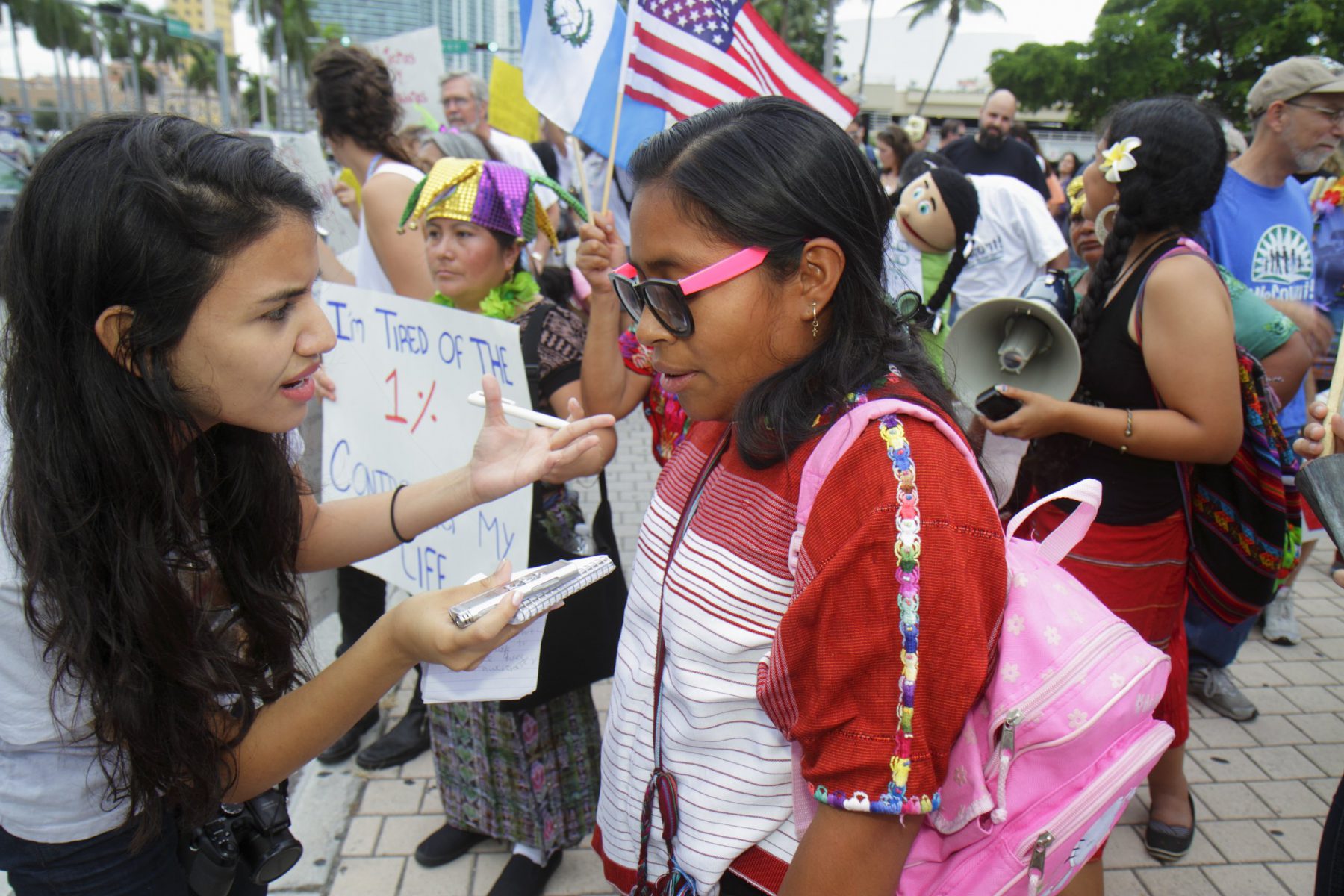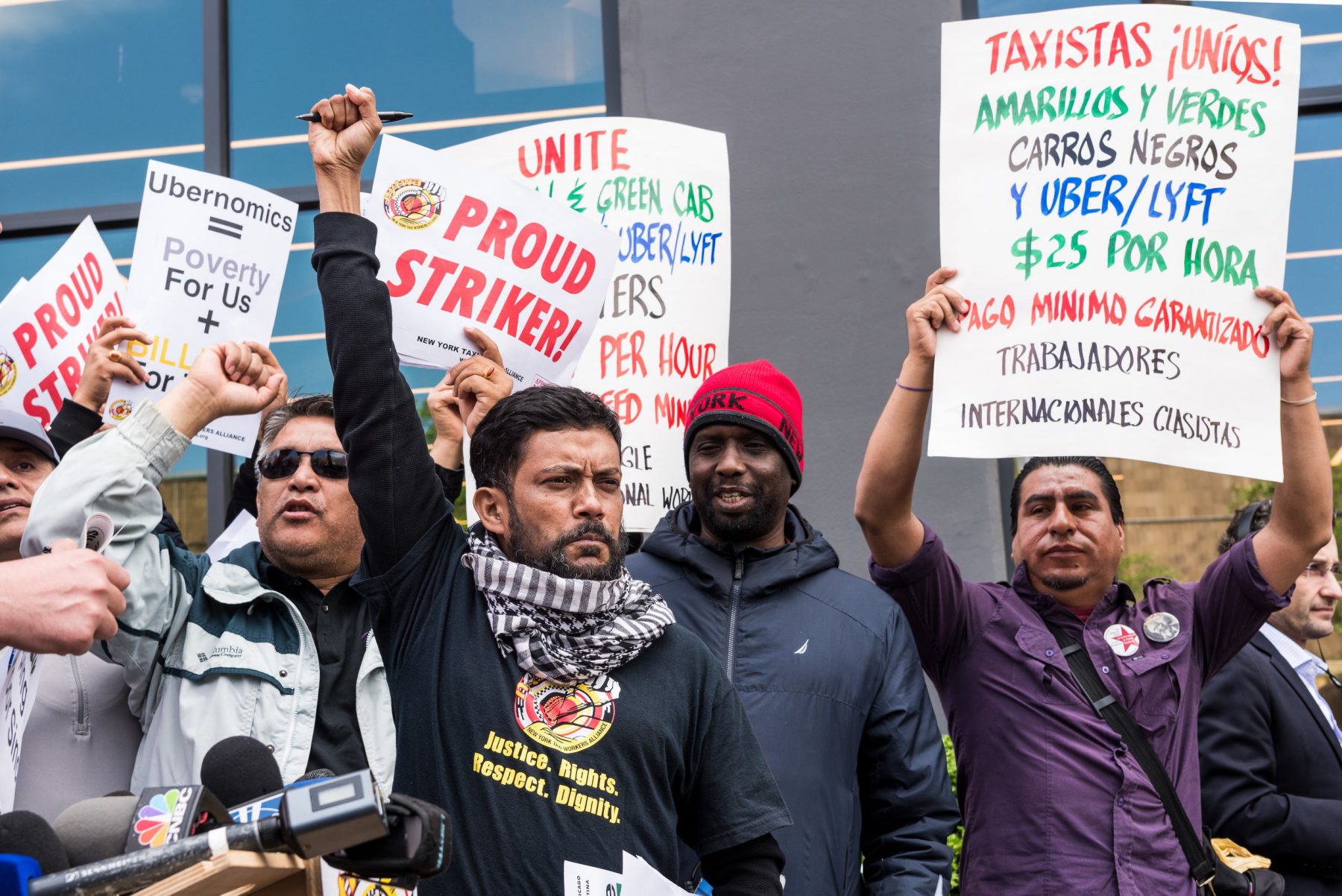
One of the best journalism stories I’ve ever heard was about the legendary, cigar-chomping New York Daily News reporter Jimmy Breslin. There he was at President John F. Kennedy’s burial, just one reporter among a horde of others covering the same story. While many of his peers interviewed luminaries and reported on loved ones, Breslin was able to see what was invisible to most: Clifton Pollard, the man who dug the president’s grave.
Pollard was a humble man, a World War II veteran who made only $3.01 an hour. By focusing on Pollard’s work, Breslin asked readers to consider those who aren’t normally part of history but who make history happen. When he asked Pollard how he felt about digging Kennedy’s grave, he said, “You know, it’s an honor just for me to do this.”
I think about this story a lot. Probably because Breslin and I have a few things in common. Like the late Breslin, I am a journalist from Queens, New York. And like Breslin, I have working-class roots, albeit Breslin was an Irish Catholic and I’m an Egyptian-Puerto Rican Muslim. Our socioeconomic backgrounds profoundly shape the way we see the world. As newsrooms continue to shrink, and many jobs are occupied by people from elite backgrounds, journalism often fails to give voice to people like Pollard.

“If you only have upper-class voices speaking for and to the country — in newspapers, magazines or in broadcasting — can you really say that those voices can fully articulate and understand the struggles and priorities of women who can’t feed their kids, or men who can’t heat their homes,” British journalist Terri White wrote in the New Statesman in 2019. “Journalism helps us to make sense of the world, of our place in it. But how can that be true for the working class if they aren’t shaping the stories we read, watch and listen to?”
Part of the reason for the lack of socioeconomic diversity in newsrooms is rooted in who is often granted job access and how little journalists make. As of 2021, the national median journalism salary was $48,370, not a ton to live on if you have student loans and don’t come from generational wealth. What was once a profession where working-class truth seekers like Breslin, Juan González or Seymour Hersh could start their storied careers as copy boys and work their way up the ranks, has now become a profession dominated by those who studied at elite universities. A 2019 study by the Asian American Journalists Association found that 65% of summer interns from prestigious newsrooms, such as The New York Times and NPR, were selected from elite schools. Another study found that nearly 44% of New York Times employees attended prestigious universities. At The Wall Street Journal, it was closer to 50%.
That’s not to say all journalists who attend elite schools are wealthy, and I’m not here to disparage journalists who are fortunate enough to attend the nation’s top universities, but the lack of newsroom diversity doesn’t stop at education. Only 23% of newsroom employees in 2016 identified as people of color, according to the Pew Research Center. Having a mostly white, mostly elite-educated newsroom impacts the kind of stories these outlets report on. For example, a 2019 Canadian study found that “the tone of the economic news strongly and disproportionately tracks the fortunes of the richest households, with little sensitivity to income changes among the non-rich.” Until fairly recently, labor reporting was also a dying beat. Even local reporting is not safe, with newsrooms like The Wall Street Journal cutting its metro section in 2021.
My own path into journalism was far from easy. The first hurdle was figuring out how I could get my foot in the door. I didn’t go to journalism school. I had no industry connections. My parents — my father was a cab driver, my mother a cashier at the now-bankrupt Sears — weren’t rich. All I really had was a burning desire to be a journalist. After a few years as a community and labor organizer, I decided to throw caution to the wind and pursue my passion, at a great financial cost to myself. During my first few years as a freelancer, I made very little money. The hustle of trying to sell my next pitch drained me physically and emotionally. When I applied for entry-level positions at various newsrooms, I faced one rejection after another.
Still, I refused to give up. The rush I would feel after I got a story published was exhilarating and kept me hooked. Over the past few years, I’ve built a local beat covering the intersection of labor, race, class and urban policy. I didn’t graduate from an Ivy League school, but I knew I had something many others didn’t: a working-class perspective.

When I did a series of articles for Documented NY about the Yellow Cab medallion crisis, I had the ability to empathize with the cab drivers’ struggle in a way most couldn’t. Many of my Jackson Heights neighbors, almost all working-class immigrants, suffered acutely during the pandemic. This included the many cab drivers who live in my building. I would watch my neighbor Syed Quadri sit alone in his parked cab. Unable to work, he passed the time by watching Bangladeshi soap operas. When I interviewed him and learned about his plight, I couldn’t help but think about my father — would he have been able to support us if he were still driving a cab when the pandemic hit? What would my grandfather and two uncles — also taxi drivers — have done?
My personal experience has trained me to see struggle, to see someone like Quadri sitting alone in his cab. When developers wanted to build a Target-anchored mall in my mostly working-class neighborhood, residents led a campaign to try to stop it due to fears it would gentrify the community. Many small business owners were terrified that the chain retailer would put them out of business. While other outlets reported on the development, my story had an added urgency to it.
I am acutely aware of the Pollards of the world.
Working-class journalists who are deeply rooted in the communities they cover can find stories that other reporters might miss. The inspiring work of Mexican-American journalist Brittny Mejia comes to mind. During the 2019 Getty wildfire, which burned 745 acres in Los Angeles, Mejia noticed the housekeepers and gardeners still working outside of multimillion-dollar homes as the neighborhood filled with smoke. She was able to capture the fears of these immigrant laborers — which were not of the fire itself, but of the loss of a day’s pay. While homeowners had long evacuated, many of these workers didn’t even know a fire was raging when they’d set out for work that morning.
When I feel a sense of imposter syndrome navigating this industry, I think of stories like Mejia’s — how we can feel the laborers’ pain because Mejia clearly felt it; she knew how to spot it, how to capture it. I also think about Breslin and how valuable perspectives like ours are in a newsroom. I am able to see the world through a different lens — one that can make the invisible visible.



